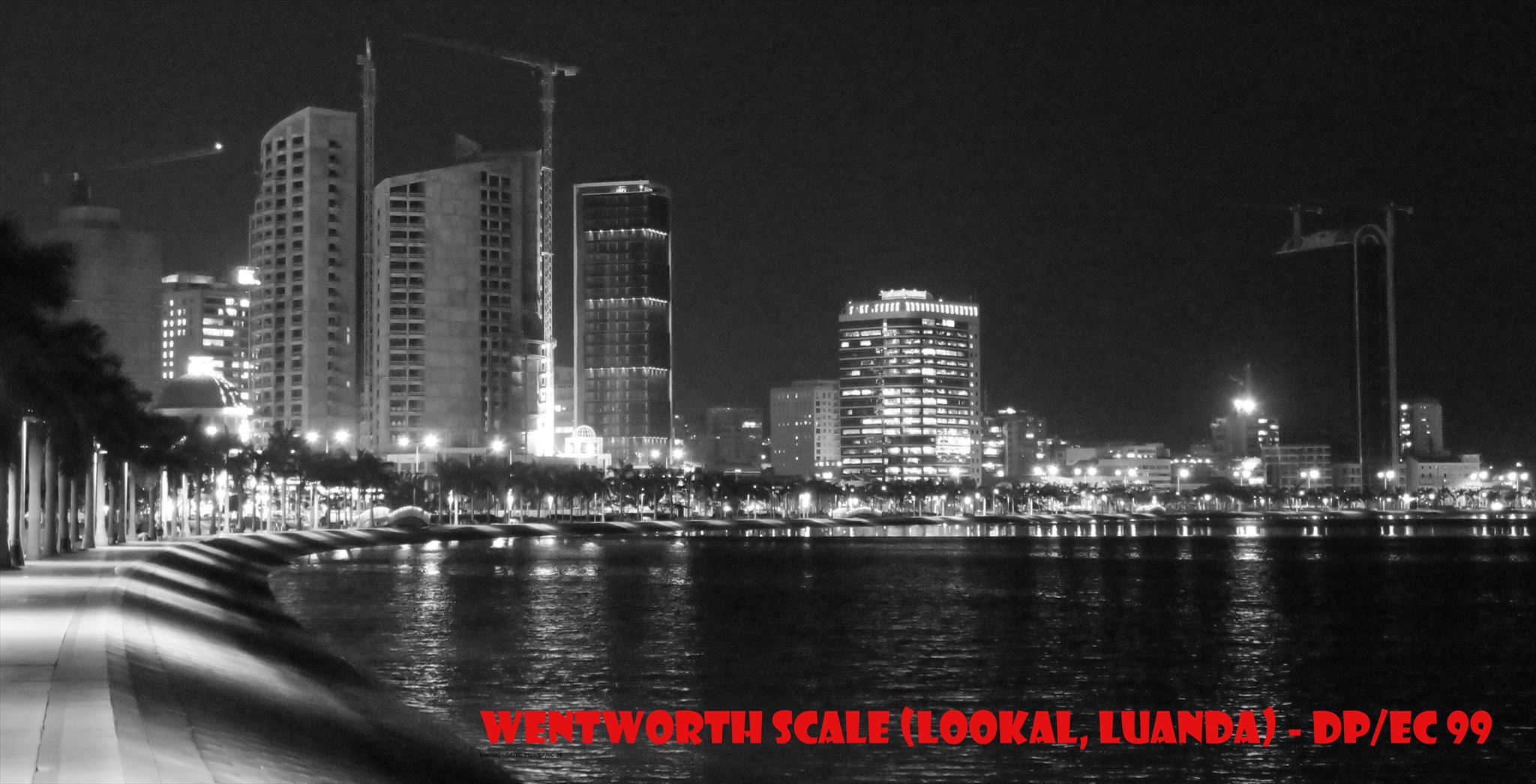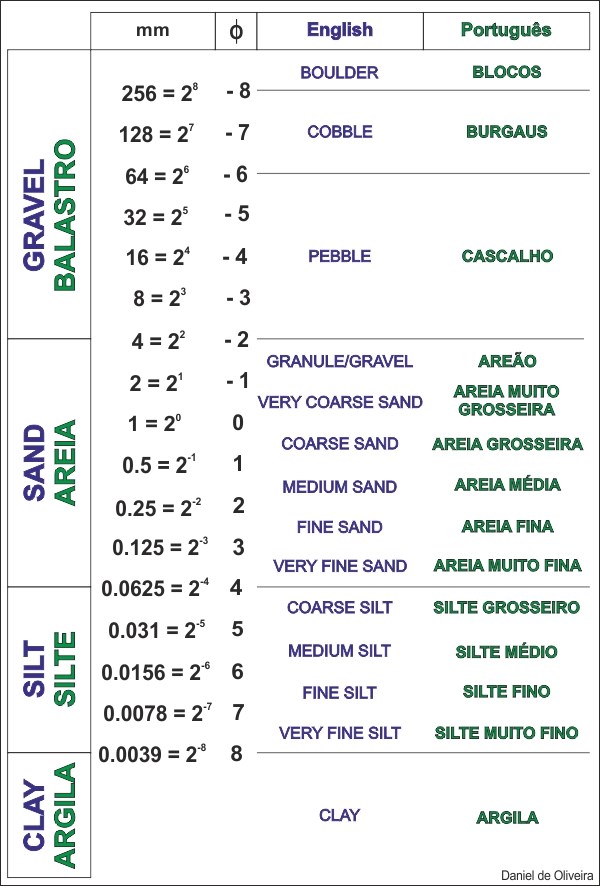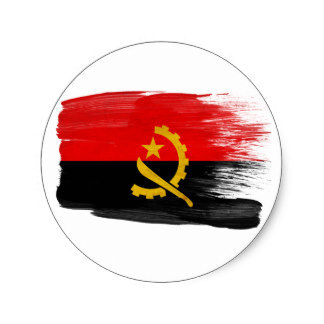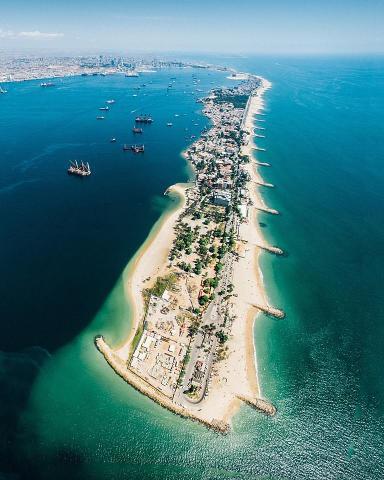

Chester Keeler Wentworth was born in Aspen, Colorado, on May 7, 1891, one of five children of Frank Louis Wentworth and Anna Maria Keeler Wentworth. Chester graduated from the University of Chicago with an A.B. degree in geology in June 1918. Chester took his M.S. degree in 1921, and his Ph.D. in 1923, both at the University of Iowa. It was during his time as a student at Iowa that Chester’s unusual combination of aptitudes led to the achievement for which he is most widely known — the Wentworth scale for the classification of clastic sedimentary rocks.
Chester K. Wentworth, Fellow of The Geological Society of America since 1923, died in Hilo, Hawaii, on January 6, 1969, after several years of illness. He is survived by his widow, Juliette Oliveira Wentworth, and by two sons by a former marriage, Robert and Gordon. Another son, Thomas, was killed in France in 1944.

The original scale was devised in 1898 by the American sedimentary petrologist J.A. Udden was adapted (1922) by C.K. Wentworth, who expanded the definitions of the various grades to conform with actual usage by researchers; most sedimentologists have adopted the Udden scale with the Wentworth modifications.
Grain size
Grain size scale, in sedimentology, division of a continuous range of particle sizes into a series of discrete groups. Several such scales have been devised for the purpose of standardizing terms and providing a basis for statistical analysis. On most scales, the finest particles are designated clay, followed by silt, sand, granules, gravel, pebbles, cobbles, and boulders. The size limits for each grade vary from scale to scale.
In order to claim a find in this EarthCache you have to get yourself to the coordinates supplied. There, answer the following three (3) questions:1. Using the Wentworth Scale in the listing classify the sediment according to grain size.
2. Examine the sediment composition closely and tell me whether the sediment if mono (only one type of material) or multimineralic (more than one type of material)?
3. Does the sand also contain shell fragments?
If you feel you have all the answers correct, please log your found but also send me the answers via e-mail so I can check them. If I don’t answer you it is because they are correct and you have another found.Please note that when you e-mail me, please supply the reference (GC7CVEK) and name [The Wentworth Scale (Lookal, Luanda) - DP/EC-99] of the cache and please click on the “I want to send my e-mail address along with this message” so that when I reply to you the messages don’t go into e-mail heaven (or hell).


Chester Keeler Wentworth nasceu em Aspen, Colorado, em 7 de maio de 1891, um de cinco filhos de Frank Louis Wentworth e Anna Maria Keeler Wentworth. Formou em geologia na Universidade de Chicago em Junho de 1918. Chester completou o seu Mestrado em 1921 e o seu doutoramento em 1923, ambos na Universidade de Iowa. Foi durante seu tempo como um estudante em Iowa que a combinação incomum de aptidões de Chester o levou à conquista pela qual ele é mais conhecido - a escala Wentworth para a classificação de rochas sedimentares clásticas.
Chester K. Wentworth, membro da Sociedade Geológica da América desde 1923, morreu em Hilo, Havaí, a 06 de janeiro de 1969, após vários anos de doença. É sobrevivido pela sua viúva, Juliette Oliveira Wentworth, e por dois filhos de um casamento anterior, Robert e Gordon. Outro filho, Thomas, foi morto na França, em 1944.
A escala original foi concebida em 1898 pelo sedimentólogo americano J.A. Udden. Em 1922 foi adaptada por C. K. Wentworth que a expandiu em vários graus e que permanece até hoje a referência de classificação granulométrica de sedimentos clásticos.
A escala granulométrica, em sedimentologia, é a divisão de uma gama contínua de dimensões de partículas agrupados por séries de grupos discretos. Várias dessas escalas foram criadas com a finalidade de padronizar termos e proporcionar uma base para a análise estatística. Na maioria das escalas, as partículas mais finas são designados argila, seguido de silte, areia, areão, cascalho, burgaus, e blocos. Os limites de tamanho para cada grau pode variar de escala a escala.
 restinga é um espaço geográfico formado sempre por depósitos arenosos paralelos à linha da costa, de forma geralmente alongada, produzido por processos de sedimentação, onde se encontram diferentes comunidades que recebem influência marinha, podendo ter cobertura vegetal em mosaico. Esse tipo de vegetação também pode ser encontrado em praias, cordões arenosos, dunas e depressões em diversos estágios sucessionais existentes fora da restinga na parte interior do continente. A restinga também se pode formar nos estuários dos rios, pela deposição de sedimentos, dando origem à formação de rios ou assoreamentos (FONTE)target="_blank">.
restinga é um espaço geográfico formado sempre por depósitos arenosos paralelos à linha da costa, de forma geralmente alongada, produzido por processos de sedimentação, onde se encontram diferentes comunidades que recebem influência marinha, podendo ter cobertura vegetal em mosaico. Esse tipo de vegetação também pode ser encontrado em praias, cordões arenosos, dunas e depressões em diversos estágios sucessionais existentes fora da restinga na parte interior do continente. A restinga também se pode formar nos estuários dos rios, pela deposição de sedimentos, dando origem à formação de rios ou assoreamentos (FONTE)target="_blank">.
A Restinga de Luanda, mais conhecida pela Ilha de Luanda, é um exemplo bem visível na paisagem Angolana. Convido-vos a virem conhecer esta restinga, com os seus habitantes, as suas paisagens, a sua gastronomia e a sua cultura. Divirtam-se!
A fim de reivindicar um found nesta EarthCache dirigiam-se às coordenadas fornecidas. Aqui reúne os dados necessários para poderes reponder às seguintes três (3) perguntas:
1. Utilizando a escala de Wentworth fornecida na listing classifica o sedimento.
2. Examina o sedimento com muito cuidado e verifica se o sedimento é monominerálico (composto por um só tipo de material) ou multiminerálico (composto por mais que um tipo de material)?
3. A areia contém fragmentos de conchas?
Se achas que tens as respostas correctas, faz o teu log de "found", mas envia-me também as respostas por e-mail para que eu possa vê-las. Se eu não te responder é porque elas estão correctas.
Por favor, nota que quando me enviares um e-mail, por favor forneçe a referência (GC7CVEK) e nome [The Wentworth Scale (Lookal, Luanda) - DP/EC-99] da cache e clica em “I want to send my e-mail address along with this message” para que quando eu responder as mensagens não sigam para o saco roto do geocaching.com.

 The most exciting way to learn about the Earth and its processes is to get into the outdoors and experience it first-hand. Visiting an Earthcache is a great outdoor activity the whole family can enjoy. An Earthcache is a special place that people can visit to learn about a unique geoscience feature or aspect of our Earth. Earthcaches include a set of educational notes and the details about where to find the location (latitude and longitude). Visitors to Earthcaches can see how our planet has been shaped by geological processes, how we manage the resources and how scientists gather evidence to learn about the Earth. To find out more click HERE.
The most exciting way to learn about the Earth and its processes is to get into the outdoors and experience it first-hand. Visiting an Earthcache is a great outdoor activity the whole family can enjoy. An Earthcache is a special place that people can visit to learn about a unique geoscience feature or aspect of our Earth. Earthcaches include a set of educational notes and the details about where to find the location (latitude and longitude). Visitors to Earthcaches can see how our planet has been shaped by geological processes, how we manage the resources and how scientists gather evidence to learn about the Earth. To find out more click HERE.